Introduction
According to Muslims, the Holy Quran is the Word of God, while nature is the Work of God. As such, we can expect to find considerable harmony between God’s Word and God’s Work. While the Quran is not a scientific textbook, it uses physical phenomena to demonstrate spiritual truths, hence the frequent allegories to the life-giving water (revelation) reviving a (spiritually) dead Earth. However, in many cases the descriptions of physical phenomena seem to serve another purpose — to act as prophecies of future scientific discoveries. These confirm the reader’s conviction that the Quran is not the work of the Prophet Muhammad, peace be upon him, but rather the word of God. Naturally, verses claimed to be scientific prophecies have become a major attraction to Islam in the recent era, with many people of a scientific bent being extremely impressed by their articulacy and accuracy.
In this article, we will explore one verse claimed to describe the Big Bang, and another claimed to describe the expansion of the universe. To do so, we will first recount the relevant science, then the verses themselves, as well as the criticisms of the Muslim argument. We find that the Quranic claim is accurate and that its criticisms fall short, bolstering the claim that the Author of the Quran is the Author of the Universe.
The Science
Just over 100 years ago, luminaries such as Einstein, along with almost the entire scientific world, believed that the universe did not have a beginning. It was static — it always was and always will be. But Einstein’s own Theory of General Relativity changed that. When physicists looked at the equations governing its applications, they realised that the universe should be expanding. Like a balloon being blown up, if you rewind the clock, you realise that an expanding universe should have started from an initial much smaller point of origin. So was the universe expanding? The physics world didn’t have to wait long. Painstaking work by Edwin Hubble in the 1920’s showed that the light from distant galaxies was red-shifted — its wavelength was being stretched, like a squiggly line on a balloon becoming stretched as the balloon’s skin expanded. For the first time, cosmologists could ‘see’ the expansion of the universe. Georges Lemaitre, a Belgian Priest who moonlighted as a mathematical prodigy, extrapolated the expansion of the universe back in time to a ‘Primeval Atom’ — a state of the universe where it was highly dense and compact, before expanding and evolving into the cosmos we know and love today.
While his idea was widely acclaimed for being an elegant solution to cosmology’s problems, many found the idea of a beginning repugnant. It seemed like the religious idea of a ‘Creator’ who set of the universe was creeping into physics. Over the next few decades however, the idea of a Big Bang gained immense empirical support. What really won the day was discovering the radioactive ‘afterglow’ of the Big Bang, the Cosmic Microwave Background Radiation, whose measurement confirmed the Big Bang Theory’s predictions. More evidence has poured in since then, and today Big Bang cosmology is the starting-point for understanding of the universe’s origin and evolution.

The Quran
The Holy Quran describes God as both the originator and sustainer of the universe. In fact, the second line of the Quran begins by describing God as ‘Rabbil Aalameen,’ meaning that God is the Creator, Sustainer, and Developer of every world. Evolution is the overriding law of the Quran’s cosmology, first from God’s decree into actual existence, and from there into the universe we see today.
(Please note that the Ahmadiyya Quranic numbering system follows traditions of the Prophet Muhammad, peace be upon him, which tell us that chapters begin with the verse ”Bismillah…’. Thus we enumerate this verse at the beginning of every chapter. This means that in Qurans published by non-Ahmadi publishers, you should subtract 1 from the verse number given below, in all chapters apart from Chapter 9).
بَدِیۡعُ السَّمٰوٰتِ وَ الۡاَرۡضِ ؕ وَ اِذَا قَضٰۤی اَمۡرًا فَاِنَّمَا یَقُوۡلُ لَہٗ کُنۡ فَیَکُوۡنُ
He is the Originator of the heavens and the earth.
When He decrees a thing, He does only say to it, ‘Be!’ and it is. (2:118)
Describing in more detail the early moments of the universe, the Quran says the following:
اَوَ لَمۡ یَرَ الَّذِیۡنَ کَفَرُوۡۤا اَنَّ السَّمٰوٰتِ وَ الۡاَرۡضَ کَانَتَا رَتۡقًا فَفَتَقۡنٰہُمَا ؕ وَ جَعَلۡنَا مِنَ الۡمَآءِ کُلَّ شَیۡءٍ حَیٍّ ؕ اَفَلَا یُؤۡمِنُوۡنَ
Do not the disbelievers see that the heavens and the earth were a closed-up mass (ratqan), then We opened them out (fafataqnahuma)? And We made from water every living thing. Will they not then believe? (21:31)
But the Quran does not stop there. It also describes the expansion of the universe:
وَ السَّمَآءَ بَنَیۡنٰہَا بِاَیۡٮدٍ وَّ اِنَّا لَمُوۡسِعُوۡنَ
And We have built the heaven with Our own hands, and verily We go on expanding it. (51:48)
Let’s take a closer look at these two verses.
The ‘Big Bang’ Verse
اَوَ لَمۡ یَرَ الَّذِیۡنَ کَفَرُوۡۤا اَنَّ السَّمٰوٰتِ وَ الۡاَرۡضَ کَانَتَا رَتۡقًا فَفَتَقۡنٰہُمَا ؕ وَ جَعَلۡنَا مِنَ الۡمَآءِ کُلَّ شَیۡءٍ حَیٍّ ؕ اَفَلَا یُؤۡمِنُوۡنَ
Do not the disbelievers see that the heavens and the earth were a closed-up mass (ratqan), then We opened them out (fafataqnahuma)? And We made from water every living thing. Will they not then believe? (21:31)
This verse makes a few clear statements:
- The heavens and the Earth (ie: the cosmos), while differentiated now, were once a closed-up mass, described as ratqan (رَتۡقًا)
- The heavens and the Earth were opened up (fafataqnahuma) from their state of being ratq.
- Disbelievers will ‘see’ this, i.e.: there will be observational evidence for this, and the verse’s contents will be an argument for belief in God and Islam.
- Water is the source of all life.
While the fourth point is now widely accepted as being true, it is not our focus here. The first three points concern us. Are they accurate?
To explore this, we need to first explore the meaning of ratqan? Ratqan is an accusative form of the noun ratq, and its essential meaning is that of something that is closed up. Meanings given in Malik Ghulam Farid’s Quran Dictionary are being stitched or sewn up when applied to cloth, or the closing up of a breach between two disagreeing parties. Thus the underlying meaning is of harmonising differing elements into one whole.1 Applied to this verse, he translates it as a ‘closed-up mass’, as denoted by the indefinite case. The famous dictionary Lisan-ul-Arab also lists ‘darkness’ as one of the word’s meanings.2 Thus the picture that emerges is a dark, homogenous mass, which becomes the ‘Heavens and Earth.’
Next we turn to the meaning of “and then We opened them up” for which the arabic is fafataqnahuma. This means that something is cloven asunder. Lane’s Lexicon describes the essential meanings as the cleaving asunder of something united to make it disunited.3 The word is in the dual, applying it grammatically to the ‘heaven and the earth’ just described as a closed-up mass.
So far, so startling. This is a pretty perfect description of the Big Bang. The cosmos was indeed a closed-up mass, ie: a highly dense and tiny point which has opened up to produce the wider universe.
Lastly, the Quran makes a very specific prophecy regarding this — that the observational evidence for this would be found by the disbelievers, ie: the non-Muslims. The verse ends by addressing this atheistic era: will you not believe? That is: will the modern western world not believe in God and Islam, when a beginning of the universe is now scientifically supported, and its discovery predicted by the Prophet of Islampbuh 1400 years ago, in the depths of the Arabian desert?
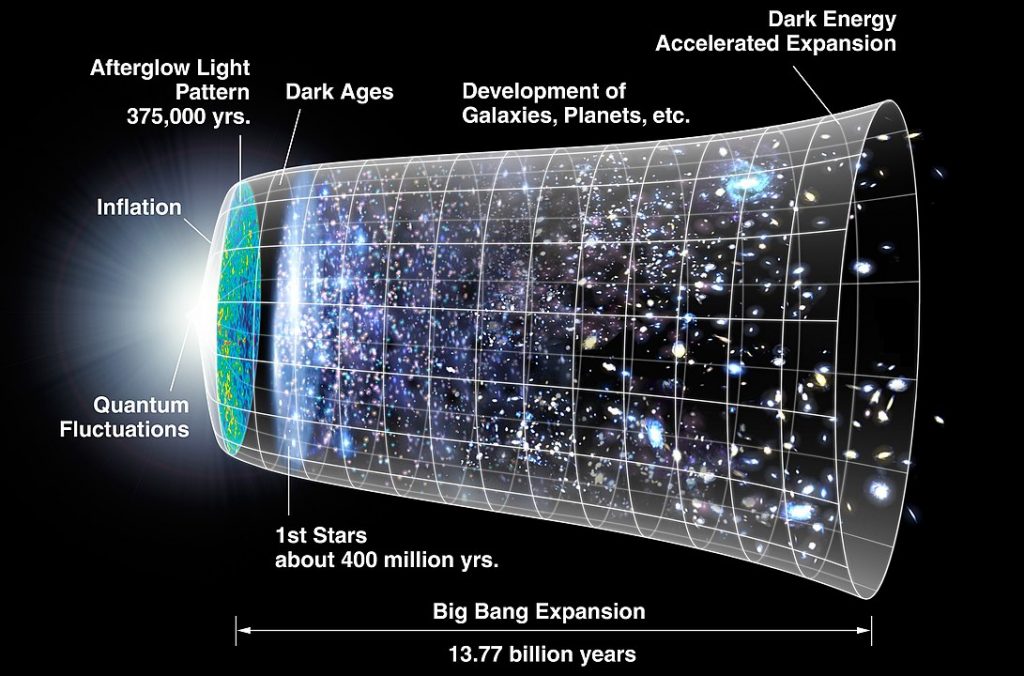
Objections
Critics of Islam have scrambled to respond to this verse. We will recount their objections below, using as our reference Wiki-Islam, the ‘encyclopedia on Islam that anyone can edit!’ As we will see, an open-source ethos has not managed to attract well-informed arguments.
No mention of small volume?
The first major objection is that ratq cannot apply to the early dense state of the universe because there is no explicit reference to the small volume of the universe in that word. This is true. The word ratqan does not necessarily entail ‘occupying a small volume’. However this is in fact implied by the word fafataqnahuma, ie: opening out. Naturally, if the universe has been opened out from a ratq, then that ratq must have been a unified mass smaller than the universe. The meaning of ‘darkness’ further cements it as a good description of the Big Bang.
Earth was not created yet?
The next objection is that the word meaning ‘We opened the two out’ — fafataqnahuma — is in the dual case, and is applied to the Heavens and the Earth. Critics say that if the verse was to apply to the Big Bang, then the ratq should have been opened out instead. After all, in reality, the Earth did not yet exist, and so could not be cleaved apart from the heavens in the first place. This means that the author of the Quran was ignorant to the fact that the Earth would only be produced billions of years in the future — it was not simply stitched up to the heavens, only to be peeled apart.
This objection is barely coherent. The entire import of the verse is that the Heavens and the Earth were once an undifferentiated mass, ie: a ratq. Ratqan, as described above, means something which is closed up and seamless, a harmony instead of a plurality. The very meaning of the verse is therefore: what you see as the Heavens and the Earth, different planets, the sun and the stars, were once harmonised as one thing. Nowhere in the verse does it say that the Heavens and Earth were always in their current form. Quite the opposite — it says they were once a ratq! Thus the basic import of the verse contradicts this objection.
But then why does the Quran refer to the primordial form of the Heavens and Earth as being opened out, rather than the ratq? The reason why ‘opened out’ is applied to the Heavens and the Earth and not ratq is to indicate the potential that God knew was latent in the ratq. This is a teleological (purpose-driven) way of speaking that is common in the Quran and in everyday life. God tells us that the current cosmos once was in a ratq, and God opened it out to produce the Heavens and the Earth.
For instance the Quran refers to individual people and the human species as a whole as ‘man’ even when they are not yet humans, but rather a primordial state, destined to become man:
ہَلۡ اَتٰی عَلَی الۡاِنۡسٰنِ حِیۡنٌ مِّنَ الدَّہۡرِ لَمۡ یَکُنۡ شَیۡـًٔا مَّذۡکُوۡرًا
“There has certainly come upon man a period of time when he was not a thing spoken of” (76:2)
وَ اللّٰہُ اَنۡۢبَتَکُمۡ مِّنَ الۡاَرۡضِ نَبَاتًا
“And Allah has caused you to grow as a good growth from the Earth” (71:18)
A well-known saying of the Prophet Muhammadpbuh, much commented on by the Sufi Saint Hazrat Ibn Arabi, reads:
“I was the Seal of the Prophets while Adam was still between water and clay.”
Thus Adam is referred to as being ‘Adam’ while only existing in potentiality. Even more startlingly, it refers to the Prophet Muhammadpbuh as being the Seal of the Prophets despite him being the progeny of Adam, only to be born thousands of years in the future. The tradition indicates that those things which are decreed by God to occur in the future can be referred to as if they have already occurred. This is also the philosophy of why many events on the Day of Judgment, far in the future from our perspective, are referred to in the past tense in the Holy Quran. Their outcome has already been decreed.
We can understand this idea in a more day-to-day way too. If someone is making cupcakes, they first make a mixture of flour, eggs, butter etc… At that point, you have a smooth mixture that is nothing in and of itself. But if you ask the cook what he’s doing, he will say, “I’m making cupcakes, can’t you see?” The cupcakes exist as a plan in the cook’s mind, though they exist only in potential in the mixture itself. If someone throws the baking tray on the ground, they’ll cry “you’ve ruined my cupcakes!”, even though they are completely inedible in their current state.
Thus the Heavens and the Earth existed as a physical potential of the ratq. But since God knew that He would ultimately differentiate the ratq to become the universe we know today, he referred to its future state as if it already existed.
Isn’t the Earth in the Heavens?
The last possible objection is that the Earth is part of the universe and thus cannot be said to be something different from the ‘Heavens.’ However, this is simply an idiom that exists in every language. We refer to our own planetary home as being one thing, and everything else as another thing. Thus in English everyone understands that the ‘Heavens’ is everything beyond the Earth, while knowing that the Earth is in another sense part of the wider Heavens. That hasn’t stopped the phrase ‘Heaven and Earth’ being used as the title of an 1821 drama by Lord Byron, a 1993 Oliver Stone movie, and a 1989 Kylie Minogue song!
Do you like videos?
Subscribe to our YouTube Channel. We have over 10K subscribers and ~ 1 million views.
Join us!
Prevalent Creation Myths
The next objection is that in reality, this verse is not surprising, because the idea of heavens and Earth splitting was a known creation myth in the Middle East. The critics write:
“Among the Egyptians for example, it was the involuntary separation of Geb (the earth god) from his wife and sister Nut (the sky goddess) that was responsible for the division of the earth from the sky. The Sumerian Epic of Gilgamesh likewise describes the moment “when the heavens had been separated from the earth, when the earth had been delimited from the heavens” as a result of the separation of a sky God (An) from an earth Goddess (Ki). If you remove the pagan references, you have the same story as found in the Qur’an.”
Thus the objection is that the idea of splitting the heavens and the Earth was simply plagiarised from prevalent myths.
There are many problems with this conjecture. Chief among these is the failure to recognise the nature of the argument. The idea of different parts of the Cosmos being split is indeed one of many recurring themes in ancient Creation Myths. What is not prevalent is the description of a ratq, a closed-up, dark mass, from which the heavens and earth once emerged, along with the lack of contradictory and inaccurate details.
Moreover, if the Prophet Muhammad were, God forbid, a plagiariser, why would he go by creation myths from Pagan culture which he detested? Why would he not take from the Bible, to which he at least had theoretical access? But of course, the Days of Creation listed in the Bible are radically different to those in the Quran, as are so many other details. The Prophetpbuh did not plagiarise from the Bible or anywhere else.
Not only this, but the link between Sumerian/Egyptian creation myths, and Arab creation myths, is simply asserted. There is no evidence for this.
Furthermore, an analysis of Sumerian and Egyptian creation myths refutes this absurd criticism. Sumerian creation myths do indeed mention various gods separating the heavens and the earth. However, what the critics do not describe, is the fact that this separation is part of a much wider creation myth which is completely contrary to both the Quran and modern science.
Sumerian Creation Myth
For instance, the Sumerians believed that a ‘primeval sea’ pre-dated the heavens and earth, seemingly existing since eternity. Moreover, the heavens and the earth are described as being together on some form of mountain. Lastly, the entire myth was plagued with various mentions of different demi-gods squabbling and fighting each other. Sumerian Mythology expert Samuel Noah Kramer, writes in ‘Sumerian Mythology’ (1944):
“If now we sum up the cosmogonic or creation concepts of the Sumerians, evolved to explain the origin of the universe, they may be stated as follows:
1. First was the primeval sea. Nothing is said of its origin or birth, and it is not unlikely that the Sumerians conceived it as having existed eternally.
2. The primeval sea begot the cosmic mountain consisting of heaven and earth united.
3. Conceived as gods in human form, An (heaven) was the male and Ki (earth) was the female. From their union was begotten the air-god Enlil.” 4
Naturally, the Quran does not mention a pre-existing primeval sea, nor that the heavens and the earth were a mountain, nor the myriad other elements of the rather zany Sumerian creation myths. Drawing a link is therefore implausible, as it would require explaining why only one small part of the creation myth, which just happened to be correct, entered into the Arab milieu.
It would also not explain why the Prophet Muhammadpbuh, who detested Arab Pagan mythology, would ever partake of such a creation myth.
Finally, it fails to explain the specific and accurate language of the Quranic verse.

Egyptian Creation Myth
When we turn to the Egyptians we find something very similar. It describes Nun, a primeval sea, in which various gods and goddesses inhabited and produced the universe. Garry J. Shaw, the noted Egyptologist, describes their creation myths in The Egyptian Myths.
“The pre-creation universe is an infinite body of water, an expanse of darkness, inert and motionless… Though beyond true human comprehension, to conceptualize and discuss this infinite watery expanse, the Egyptians personified its intertwined aspects as indissoluble male and female couples – the males as frogs and the females as snakes. There was Nun and Naunet as the limitless waters; Huh and Hauhet as infinity; Kuk and Kauket as darkness; and Amun and Amunet as hiddenness…
To the theologians of Hermopolis, who emphasized these forces of pre-creation in their myths, the eight gods created the first mound of earth (or island) together, and then formed an egg from which the sun god hatched. Depending on the myth at hand, sometimes the sun is said to hatch from an egg laid by a goose called the Great Honker, or by the god Thoth (see p. 51) in the form of an ibis. In other variations, the eight gods create a lotus in Nun, from which the sun is born, first taking the form of the scarab beetle Khepri and then as the child-god Nefertum whose eyes, when open, gave light to the world… 5
To recap, so far the Egyptian creation myth consisted of a primeval sea, teeming with demi-gods, who produced an original mound of Earth. Then the Sun is born either from some kind of cosmic egg or from a locust. But there is much, much more.
Shaw goes on to explain that when some of these gods were recalled back to Amun, they find the sun-goddess replaced with another deity. The old sun-goddess is so upset that she cried, and her tears produced humanity. The next generation of demi-gods includes Geb, the Earth-god, and Nut, the sky-god. These are said to be locked in an eternal sexual embrace. The sun travels within Nut, as does the Moon. Nut and Geb have four more demi-god children, which annoys the Moon-god, who has them separated.

Summarising the myth will show us the great chasm between the Islamic vision and Egyptian conceptions:
- Primeval waters originally existed
- A Creator-God rose from this.
- He produced many other gods.
- A primeval mound of earth was produced.
- The celestial objects are created.
- Mankind is produced
- Then the sky-god and earth-god are separated.
Compare this with:
Do not the disbelievers see that the heavens and the earth were a closed-up mass (ratqan), then We opened them out (fafataqnahuma)? And We made from water every living thing. Will they not then believe? (21:31)
Even apart from the pagan idolatry, this verse is rather strikingly different from the Egyptian creation myth. In the myth, the separation of the heavens and the Earth is preceded by primeval waters, a primeval earth, celestial objects, and quite possibly mankind itself.
In the Quran, no mention is made of these. Unlike the Bible, which may well have been influenced by these myths, there is no primeval water. There is also no prior earth, nor any prior celestial objects. In fact, the Egyptian myth is quite incoherent. The Heavens seemed to have been operating quite well before their separation from the Earth. The Quran however, stresses their primordial unity in precise language. It adds nothing, and summarises the Big Bang theory in entirely appropriate wording.
For the Prophet Muhammad to have reached within the Egyptian creation myth and pluck out the verse in question would have required nothing short of Divine Insight. Had the myth transmitted into Arab mythology, there is no conceivable reason why it would have ever ended up in the form recounted in this verse. On the contrary, mutual transmission between the Sumerian and Egyptian creation myths is quite likely given their similarities.
The reality is that the Quranic verse finds no precedent in ancient creation myths. Its language is precisely correct. Atheists would do well to reckon honestly with these facts.
Expansion of the Universe
وَ السَّمَآءَ بَنَیۡنٰہَا بِاَیۡٮدٍ وَّ اِنَّا لَمُوۡسِعُوۡنَ
وَ الۡاَرۡضَ فَرَشۡنٰہَا فَنِعۡمَ الۡمٰہِدُوۡنَ
And We have built the heaven with might and We continue to expand it indeed. And the Earth We have spread out, and how excellently do We spread it out! (51:48-49)
This verse is quite straightforward — it tells us that God has built the heavens ‘bi aydin’. This means God’s hands, his power, or his might. Obviously God does not have literal hands, so the translation here, of Hazrat Mirza Tahir Ahmadrh, the 4th Khalifa of the Ahmadiyya Muslim Community, is entirely appropriate. Then the verse tells us that surely (wa inna) God is currently expanding it. This is indicated by the word ‘la-musiuna’, which, according to Corpus Quran is the “nominative masculine plural (form IV) active participle”. Naturally an active participle refers to something that is happening now. A technical translation would be something like ‘verily we continue to be its Expander now’, the meaning of which is identical to ‘we continue to expand it.’
This construction of the Quran is remarkable. It tells us not only that God has expanded the universe, but that it is currently expanding. While the expansion of the universe from an initial point has been known since Hubble’s observations, it was assumed for decades that the expansion is slowing down. However, this expectation was overturned in the 1990’s with the discovery that while the universe’s expansion did decelerate, it then suddenly started speeding up about 5 billion years ago.6 The driver of this is ‘dark energy’, an unknown force the true nature of which is still being determined.
Interestingly, while modern cosmology tentatively believes that this expansion of the universe will go on forever, the Quran speaks of a time when the universe will be rolled up and be collapsed back into a high-density point, from which a new universe will be created.
یَوۡمَ نَطۡوِی السَّمَآءَ کَطَیِّ السِّجِلِّ لِلۡکُتُبِ ؕ کَمَا بَدَاۡنَاۤ اَوَّلَ خَلۡقٍ نُّعِیۡدُہٗ ؕ وَعۡدًا عَلَیۡنَا ؕ اِنَّا کُنَّا فٰعِلِیۡنَ
“Remember the day when We shall roll up the heavens like the rolling up of written scrolls by a scribe. As We began the first creation, so shall We repeat it — a promise binding upon Us; We shall certainly perform it.” (21:105)
As Hazrat Mirza Tahir Ahmadrh pointed out in his revolutionary book Revelation, Rationality, Knowledge and Truth, the idea of the universe being rolled up completely fits the picture of the universe collapsing into a black hole, with angular momentum causing the fabric of space to enter into it like the rolls of a parchment, before somehow emerging into a new universe. Moreover, the characterisation of the universe as a written sheet — that is, a flat geometry laden with information which can be contorted into different topologies, should be of keen interest to the Muslim cosmologist. They should ponder over its implications, and ask themselves what predictions can be generated from this description.
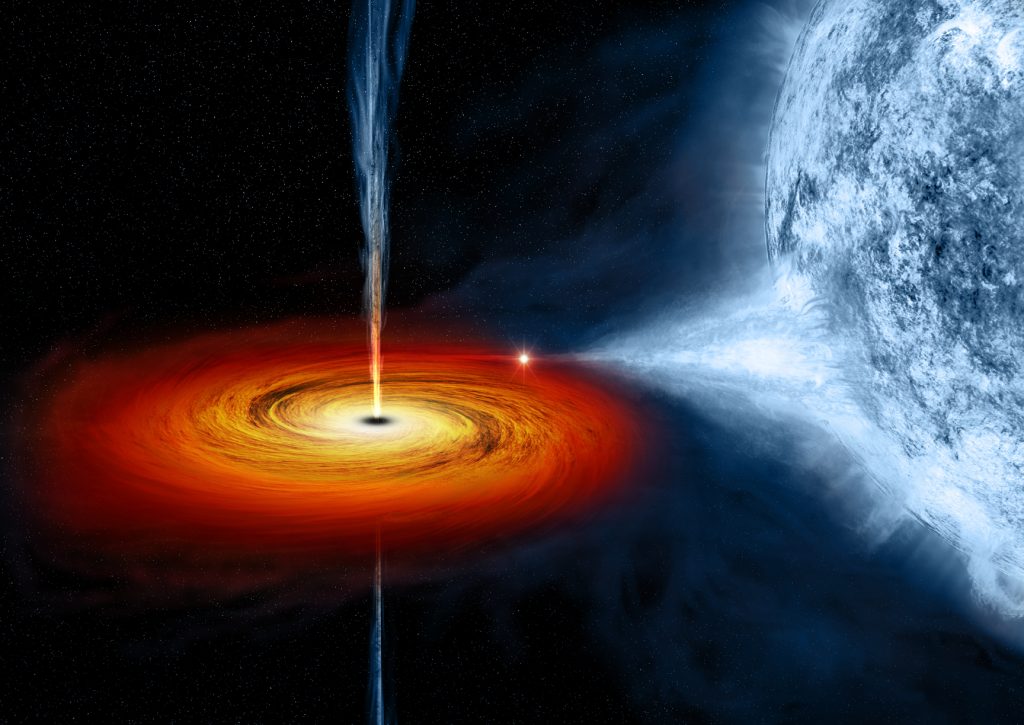
For instance: if the universe will eventually collapse, does that mean that dark energy cannot be a true cosmological constant, but may vary? Does it exist as a scalar field, as in the Quintessence idea? How else can we generate a collapsing universe from its current condition, and how do we empirically test these ideas? Though pursuing these ideas lies outside the scope of this article, they should be pursued nonetheless.
Objections
The Earth isn’t being spread?
Wiki-Islam isn’t happy with this verse at all. They ignore the fact that ‘la-musiuna’ denotes an ongoing expansion, and try and refute this by looking at the next verse, in which God says is spreading out/preparing the Earth, ‘al-mahiduna’.
“The problem here is that since identical verb forms and grammar are used for the last word in these two verses, to include tense, how can Harun Yahya [a Muslim apologist they critique] claim the first ayah refers to an ongoing, continuing expansion of the heavens, without also concluding that the second must also refer to an ongoing, continuing spreading of the earth?
The word al mahidoon الْمَهِدُونَ (the spreaders) in verse 48 is from the root mahada مهد which means to make plain, even, smooth, spread a bed. Also from this root is the noun mahdan, meaning a bed or even expanse, which appears in other verses about the creation of Earth where it was made a bed in the past tense… The tense is clear in those verses to mean a past event rather than an ongoing process.”
The authors are right to notice the identical construction of the two participles. They are wrong to conclude this is a problem for the Quran! For as we have already discussed in a separate article, the spreading out of the Earth is both something that has both happened in the past and is something which is happening today! Tectonic plates have spent millennia spreading across the Earth, with oceanic crust being literally created by a process called ‘seafloor spreading.’
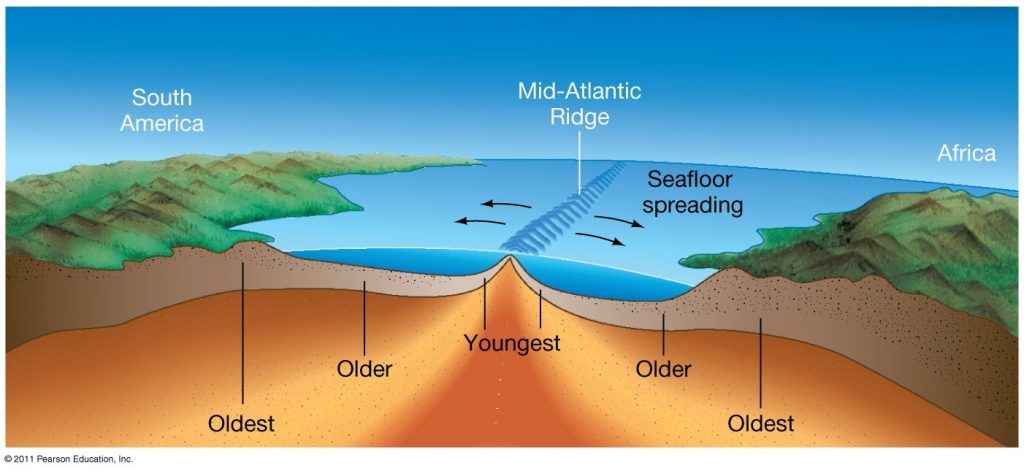
To recap — the Wiki-Islam authors ignore the grammatical construction of the word which indicates ‘ongoing expansion.’ They then defend this stance by appealing to the next verse which says that the Earth is being spread out. They then handily ignore the fact that the Earth is being spread out.
Similarities to Isaiah
“This is what God the LORD says— the Creator of the heavens, who stretches them out, who spreads out the earth with all that springs from it, who gives breath to its people, and life to those who walk on it:” Isa 44:24
“It is I who made the earth and created mankind on it. My own hands stretched out the heavens; I marshaled their starry hosts.” Isa 45:12
“… that you forget the LORD your Maker, who stretches out the heavens and who lays the foundations of the earth…” 51:13
Though Wiki-Islam don’t use this argument, another objection could be made that the Quranic verse is similar to a few verses in Isaiah in which the Prophet Isaiahas says that the heavens are ‘stretched out.’ Almost all translations have ‘stretched out’ in the past tense, with a few in the present tense – online Biblical tools do not make it clear which is most appropriate. The hebrew word is נָטָה nâṭâh, whose primary meaning is ‘stretching’, generally applied to a tent, canopy or curtain that is stretched.
It is clear that there are similarities between the Biblical statements and the Quran’s statements. This does no violence to the validity and force of the Quranic statement, for a few reasons.
Firstly, the word nâṭâh is quite different to ‘la-musiuna’, which has a clearer meaning of expanding or making vast, rather than the primary meaning and usage of nâṭâh, meaning to stretch. Had the verse been plagiarised, why would the Quran not use an equivalent word for stretch? Such a word is readily available, and phonetically closer to the hebrew — نطا (nataa). This also has the meaning of lengthening. Were the verse plagiarised, this would have been the word to use.
Secondly, the Bible does not make clear that this is an ongoing process, as the Quran does.
Thirdly, despite its relative deficiencies, there is no reason to think that these verses of Isaiah were not revealed by God — Muslims accept the validity of much of the Bible, though believe in the superiority and sanctity of the Quranic revelation.
Fourthly, had the Prophet Muhammadpbuh plagiarised this verse, God forbid, it begs the question of how incredibly, and excellently selective he was. Why did the Prophetpbuh not plagiarise the cosmogony of the Bible’s opening verses? Why are there so many differences between the Garden of Eden story of the two books, as well as countless other differences? What, short of divine insight, would cause him to dig out a few reasonable verses in Isaiah rather than myriad more prominent and more inaccurate verses?
In reality, the Quranic verse is clear and accurate. Its grammar and word selection is superior to the Biblical verse, which may well have been divinely inspired itself, though we cannot rule out later tampering by human hands.
Conclusion
We have seen that the Holy Quran contains a concise and accurate description of the salient features of the Big Bang theory. It also accurately describes the expansion of the universe to a tee. Attempts to grammatically attack the Quranic verses falter at the slightest scrutiny. Attempts to draw lines of transmission between ancient creation myths and the Quran are implausible on account of the vast differences between them, as well as an absent chain of transmission. Partial similarities to the Bible only testify to the fact that the Bible contains some authentic revelation, and does not detract from the Quran’s grandeur. Meanwhile, the force of the Quranic statements stands as testimony to its Divine Authorship.
This article and line of argumentation in entirely indebted to the analysis of Hazrat Mirza Tahir Ahmadrh in his book Revelation, Rationality, Knowledge and Truth. My thanks also goes to Maulana Abdul Jahangeer Khan sahib for his invaluable feedback.
- Malik Ghulam Farid, Dictionary of the Holy Quran, pg. 311
- Lisan-ul-Arab (arabic)
- Lane’s Lexicon, pg. 2331 (1863)
- SUMERIAN MYTHOLOGY: A Study of Spiritual and Literary Achievement in the Third Millennium B.C. Samuel Noah Kramer (1944, revised 1961), Chapter 2: Myths of Origins.
- The Egyptian Myths, Garry J. Shaw, 2014, Chapter 1
- Cosmology for the Curious, D. Perlov, A. Vilenkin (2017), pg. 137
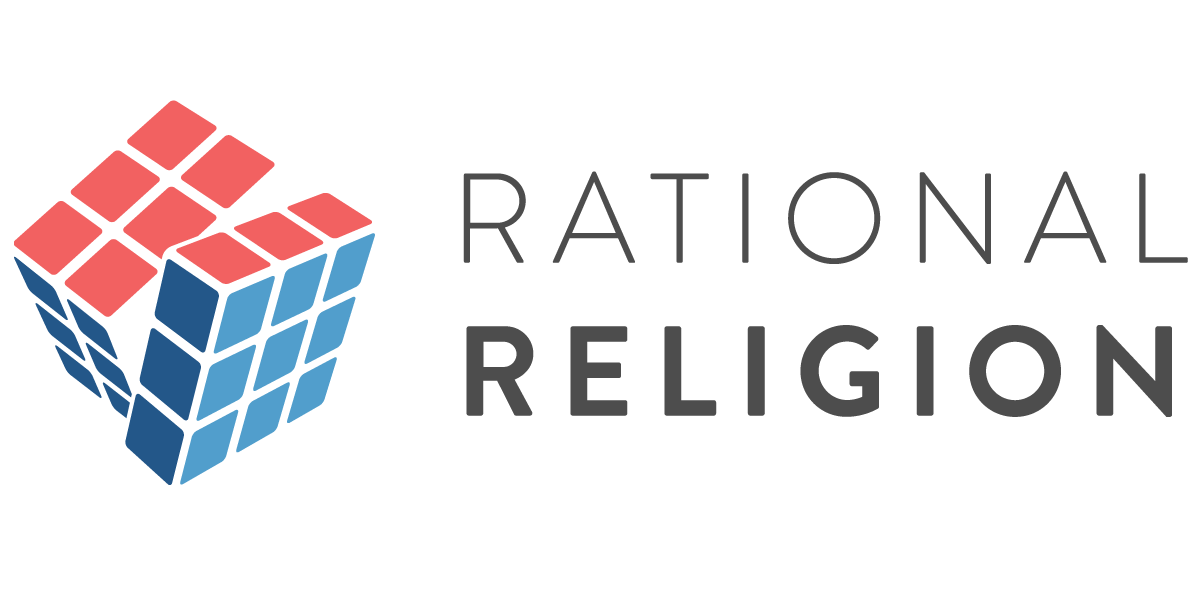

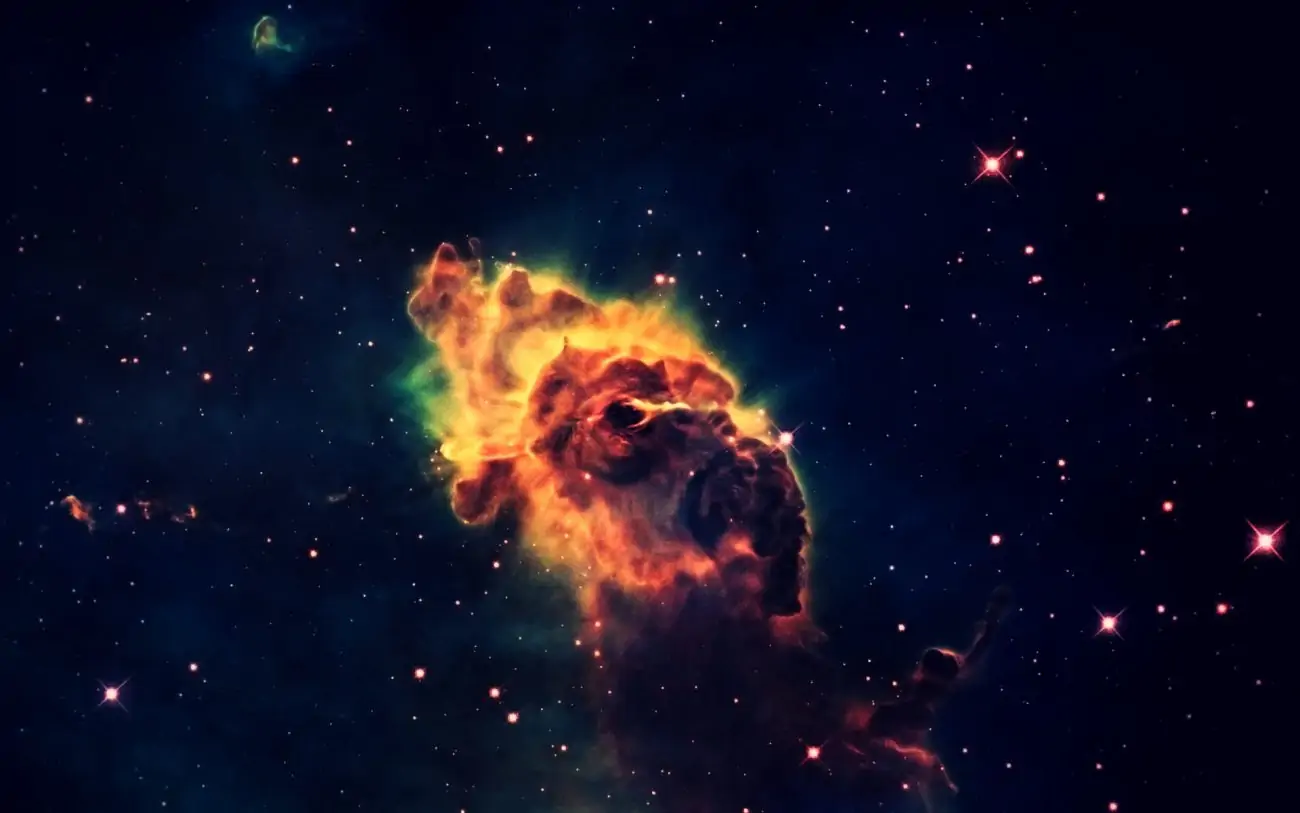



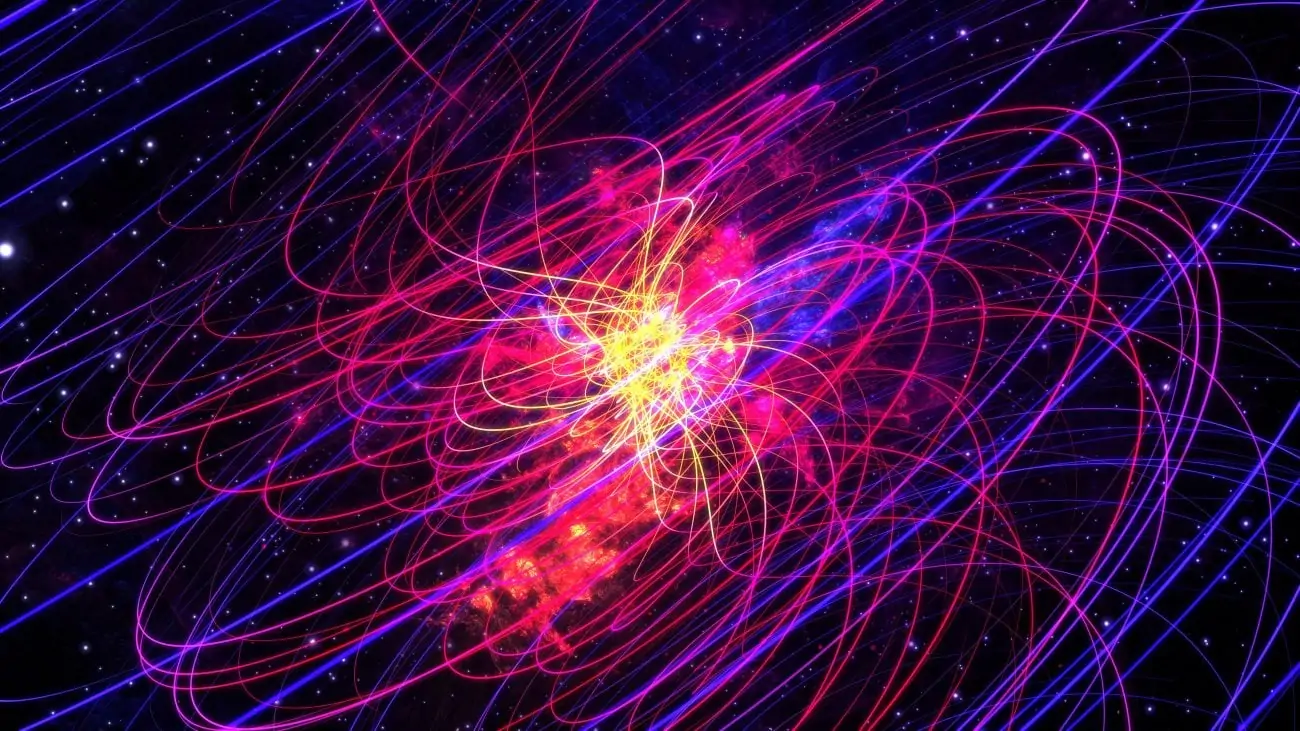


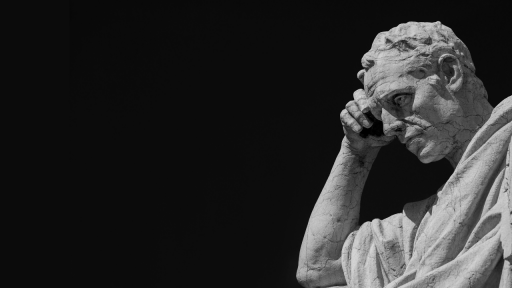

5
1
4.5
You have translated it to – Opened up. Could you provide an old dictionary with this translation? Because the one you have used was published a few decades after the Big bang and the expanding universe theory were put forward.
From the article:
“Next we turn to the meaning of “and then We opened them up” for which the arabic is fafataqnahuma. This means that something is cloven asunder. Lane’s Lexicon describes the essential meanings as the cleaving asunder of something united to make it disunited.3 The word is in the dual, applying it grammatically to the ‘heaven and the earth’ just described as a closed-up mass.”
3. Lane’s Lexicon, pg. 2331 (1863)
(Before Big Bang cosmology, obviously).
I like how you guys picked specific definitions with contradict with tafsirs and translations in the Quran
This site is so deceptive.
1st. None of the old arabic dictionaries describe rataq as a closed up mass, that dictionary you use that describes it as mass was written in 1969, most describe it as a joined entity, even if it were this would not be specific to islam since a man called an ancient greek man said that the heaven and the earth were once one mass and then separated.
2.Your definition for fafataq is also misleading since lanes arabic dictionary definitions define it as meaning being split, ripped apart,to cleave asunder, split, break, disjoin, disunite, rend apart. etc.
not being opened out, and I still do not know how being opened out would imply a small volume since this could easily be referring to the egg creation myth that they believed at the time, this is also supported by the fact it says “Do not the Unbelievers see”, this could be calling on the myths that the believed at the time.
(I would also like to mention that since the dual pronoun “huma” is used , this implies two things
1st after splitting the heavens and the earth are two separate entities
2nd It also implies that after the split the earth existed in some form which would be incorrect, also the next verse speaks about placing mountains on the earth.)
(Isn’t The Heavens in the earth)
The earth and heavens are separate and I can proof that with one verse
32:4
“Allah it is Who created the heavens and the earth, and that which is between them, in six Days. Then He mounted the Throne. Ye have not, beside Him, a protecting friend or mediator. Will ye not then remember?”
There is nothing between the universe and the earth, this means that the earth is not in the heavens, and furthermore the heavens is not the universe which basically debunks all your claims
Other Creation Myths
First I think that you are missing the point, , the idea is that the heavens and earth being separated is not an idea unique to Islam.
I would also like to point out there are clearly primordial water sense in
11:7 it says
“He it is Who created the heavens and the earth in six Days – and His Throne was over the waters – that He might try you, which of you is best in conduct. But if thou were to say to them, “Ye shall indeed be raised up after death”, the Unbelievers would be sure to say, “This is nothing but obvious sorcery!”
Many tafsir add that before the creation of the earth Allah’s throne was upon the water, and in many tafisr when mentioning the spreading of the earth they add that it was spread over the water.
Expansion of the Universe
Now I’m not an arab so I will debunk this using Logic, this verse can’t be talking about the expansion of the universe because at time of the supposed expansion of the universe the earth would of already existed, since in verse
41:9-12 it says this
“Say: Is it that ye deny Him Who created the earth in two Days? And do ye join equals with Him? He is the Lord of (all) the Worlds.He set on the (earth), mountains standing firm, high above it, and bestowed blessings on the earth, and measure therein all things to give them nourishment in due proportion, in four Days, in accordance with (the needs of) those who seek (Sustenance).Then turned He to the heaven when it was smoke, and said unto it and unto the earth: Come both of you, willingly or loth. They said: We come, obedient.So He completed them as seven firmaments in two Days, and He assigned to each heaven its duty and command. And We adorned the lower heaven with lights, and (provided it) with guard. Such is the Decree of (Him) the Exalted in Might, Full of Knowledge.”
So this verse implies that the earth existed before the heavens were built and then supposedly expanded you also have this verse
32:4
“Allah it is Who created the heavens and the earth, and that which is between them, in six Days. Then He mounted the Throne. Ye have not, beside Him, a protecting friend or mediator. Will ye not then remember?”
so the heavens can’t be the universe, so you can’t say the universe is the heavens because this verse clearly implies that the earth is not in the heavens. There are also other points mentioned like that in verse 51:48 it says that he spread the earth(past tense) giving context to the verse. There are also other points I haven’t mentioned but if i feel the need to express them I will comment
As for the big crunch, it doesn’t need a refutation because it can be debunked on its own.
I would also like to see an old dictionary with the definition – “closed up mass”. Just to make sure these arent modern translations invented after being aware of a scientific discovery.
We provide linked references and the rationale for the meanings in the main text – please consult these. If you have arguments to the contrary please started them. The idea that the dictionaries would change to support this verse is quite conspiratorial. The import given has only become popular in the last few decades, well after these dictionaries were written.
Your explanation is completely baseless. There is no big bang in quran. WikiIslam knows more arabic grammar than you. The expansion term is a past tense, and it was used for the sky/heaven
This is false. Please see the article where it says:
Then the verse tells us that surely (wa inna) God is currently expanding it. This is indicated by the word ‘la-musiuna’, which, according to Corpus Quran is the “nominative masculine plural (form IV) active participle”. Naturally an active participle refers to something that is happening now. A technical translation would be something like ‘verily we continue to be its Expander now’, the meaning of which is identical to ‘we continue to expand it.’
The verse doesn’t say God is expanding the heavens because they didn’t have the knowledge about this Science, otherwise Muhammad would’ve explained this in detail in the hadith’s, since it’s not explained your giving an interpretation to fit modern scientific discoveries and claiming a miracle, when the miracle should’ve been explained fifteen hundred years ago through Muhammad, by Allah himself.
The verse only says that God created the heavens and it’s vastness and it’s existence is continually happening we are being constantly given provisions from the vast heavens atmosphere because of God’s power, God is continually keeping the heavens in existence being vast spacious.
There’s no miracle of science because the miracle would’ve been God using Muhammad to explain this verse in detail and teaching his companions Allah created the Universe and is expanding it, but the companions don’t explain this at all, you change the understanding and the language to fit modern science but your wrong.
Ibn Abbas explains the verse saying God made the heavens a vast extent as he wills meaning as long as God wills, so it’s the creation being continued as long as God wills it to continue it.
Or as long as God wills to extend it’s provisions, this is referring to rainfall this is the active voice in the text God made the atmosphere vast and continues to provide protection water provisions from the atmosphere.
51.47 Abbas – Tanwîr al-Miqbâs min Tafsîr Ibn ‘Abbâs
(We have built) created (the heaven with might, and We it is who make the vast extent (thereof)) as We will; it is also said that this means: we expand the provision thereof.
Ibn Abbas understands this verse as God making the heavens a vast extent large size and it’s his power that makes the heaven vast and existing, just like it’s his power that keeps the Earth in existence plus the Universe and Humanity and God continues to to expand our provisions from the heavens water sunlight.
There is a typo in the ayah 76:1, please review the ayah as it is marked as 76:2 and also is written in an incorrect way.
This website is seriously the most deceiving website. Notice exactly how the translations are changed, original translators used the word “expanders” not “expanding”. Modern translators of Quran are liars and replaced the expanders with expanding just to prove the case of Quran. There is no sayings in the Quran that Allah is expanding the universe or any mention of ongoing event. Further the Egyptians concept of the heaven and earth is exactly same as the Quran if you remove the paganic rituals.
Thus this website is extremely deceiving. Notice exactly how it continues to lie about Quran translations replacing a past phrase with a completely new phrase. Also notice how it lies about Quran grammar being clear – in fact even arabs tell that Quran has grammatical mistakes and some translators has tried to fix it. Completely baseless website, absolutely lying translations and deceiving informations about Egyptians and Quran
We quite clearly explain the translation and why it’s correct. But thanks for stopping by.
21:30
Please see note about numbering in the text.
There is a mistake in the bing bang aayah number given. Its not 21:31, its 20:30.😊
0.5
You are funny! Can’t you just read science books instead of trying to find scientific claims inside a mythological book? I stopped reading the article when you wrote “heavens and the Earth (ie the cosmos)”. Anyone who knows the basics of scientific methods perfectly knows that this implication has nothing to do with science. “ie the cosmos?” Prove it!
Perhaps continuing to read would have been beneficial.
you came up with…YOU ARE FUNNY… !
why this rude and attacking ? just indicates you are just angry and ignorant that shouts out and scream rants around .
you com up and prove it wrong, by yourself, not articles and videos by others .
5
4
As you destroy the myth of Egyptians and sumerians about big bang…please also debunk the myth of hinduism…they say that big bang is also mentioned in their spcripture so Quran may have copied it.
It’s difficult to find any kind of serious claim on this online – the Hindu views about the origin of the universe are very diverse, so it’s difficult to know exactly what to refute. I’m not sure the Hindus know themselves!
http://www.quranicstudies.com/quran/does-the-quran-speak-about-an-expanding-universe/
We argue against this narrow-minded view in this article. The definitions speak for themselves.
No.
Well done article thank you.
One thing you got wrong here is that yes there was a pre universe “water” mentioned in the Quran.
“And it is He who created the heavens and the earth in six days – and His Throne had been upon water ” [Qur’an 11:7]
Whatever this water means I don’t know. Maybe a quantum sea of particles. Maybe actual water. Idk.
The throne is not in the days of creation, meaning it is not a physical throne. Also God doesn’t have a literal throne because he doesn’t… need a chair? Remember that a throne is a symbol of status and authority. Water in divine scripture generally indicates revelation. So this is a spiritual message that God’s authority is established through revelation that comes down upon his creation. Wasalaam.
it is 21:30 not 21:31, please correct the references
21:31 according to different Quranic numbering systems. See note in italics near the beginning of the article.
‘Different Quran numbering systems’
Yeah you click the link and it takes you to a heretical site, aka, ahmadiyya, aka, a non-Muslim ‘numbering’ system that is deviant to the original Quran.
Nice one!
Hazrat Ibn Abbas(ra) narrates that the Holy Prophet(sa) would not distinguish between two Surahs until the words, “In the name of Allah, the Gracious, the Merciful” were revealed to him (https://sunnah.com/abudawud/2/398).
Bismillah was part of the revelation and so Ahmadis include it in the numbering.
Thanks for stopping by, but it isn’t us who have deviated from original Islamic practice.
If you wish to know why your method is inferior:
https://www.youtube.com/watch?v=OOfe-lWMwtg&ab_channel=StraightPath
https://aqtthq.blogspot.com/2018/09/golden-ratio-in-quran.html
https://youtu.be/4Ha5YoPWOww
If you wish to know why your method is inferior, please see the above hadith which shows it is not the Prophetic way. JazakAllah.
I see how deceptive this place is. The word. Ratqan simply means to be closed up or sewn together, if we go with the closed up one, this does not imply a homogeneous mass, the Dictionary of The Holy Quran
by Malik Ghulam Farid was written in 1969. alternatively and more likely this could referring to the egg myth at the time, the egg contained heaven and earth, the next word fataqhuma is referring to being split or cloven asunder like you point out, cloven asunder means to make something disunited but it is clear how it happens, cloven means to split or sever into to two separate pieces and asunder means apart or divided. The meaning of this verse is clear if we go from your definitions. The heavens and the earth were closed up like an egg, the Allah in all his glory split them apart into two separate entities, then he spread the earth over flat over primordial waters which is supported by a quran verse and Hadith, He then took 4 days(Idk if this is correct because of all the contradictions) to create everything on the earth and made 7 earths and each one on top of another and then he turned to the heavens which was still smoke and made them seven heavens supported by invisible pillars, then he adorned the lowest heaven with stars and made the sun and moon.Further more a man named Diodorus who lived in the first century bc said that the Heavens and the earth were one mass and then separated, the exact same thing cann be found in the quran if you choose to go with that interpretation, also everything was massless before and after the big bang , nothing was opened out and nothing was disunited at anytime. Also if god really wanted to potray this scientifical miracle he would not have used an idiom when referring to the creation of the universe. Also it uses Huma at the end of fataq which implies after there split they were separate entities which implies that the earth existed in some form after the split. The separation of the heavens and earth can be read in the context of verses that mention something “between” their fully formed state (which seems to be occupied by the clouds Quran 2:164 and birds Quran 24:41). My interpretation would seem strange If it were not supported by multiple tafsirs and translations but I guess they are all wrong. Also, it starts off with “Do not the unbelievers see” now the unbelievers could not see the separation of the heavens and earth so this could be talking about the myths they believed about the separation of the heavens and earth and how they didn’t attribute it to Allah. There are many more points I didn’t bring up but for the record that verse about spreading the earth was in the past tense and it clearly isn’t talking about sea floor spreading since it uses Al ardi which means earth and more specifically land.
At the end of the day we can use plain old logic
Which is more probable, that muhammad believed in a widley believed cosmic egg myth or he believed in the creation of the universe.
Really? Earth didn’t even existed before the big bang and the terminology of one piece or joined entity has no Scientific application it. Big Bang didn’t happened only once it’s happened everywhere at once! Is it mentioned in the Quran? Read 21:31 then tell me
Why are my comments not being posted?
The reference to where God was during creation – most of you have assumed that God’s Throne so to speak was or is within this universe which is not the case. He is outside it and hence it would be futile to discuss God being involved in the creation while being inside it which was not the case.
Also as to the meanings of words used in the Quran for opening up, cloving asunder or expansion as discussed by several here eventually seem to convey the same meaning. A singular form blowing up and then expanding. As for the the creation of heaven and earth mentioned in the Quran – has to be contextually after the big bang may be several billions of years.
While I find this article quite interesting, I am skeptical about the reference to H. Mirza Tahir Ahamed and his writing which I assume is based on the Ahamadiya sects beliefs which is not part of Islam. I would like Mr. Naser to clarify this .
Thank you for your comments. Mr. Nasser is an Ahmadi Muslim.
Aadies are not Muslims. They are by law and religion accepted as non Muslim.
So plz don’t use resources from ahmadiya group.
Are you a Muslim and & the whole article is based on true reference
Mirza Ahmad and his followers are non Muslim not Muslim so plz use source of quran from other translater.
Than you.
“This objection is barely coherent. The entire import of the verse is that the Heavens and the Earth were once an undifferentiated mass”
— How is this incoherent? It’s a perfectly legitimate point to raise when you want to claim the earth and heavens being joined is anything at all related to the Big Bang. What’s incoherent is to claim the earth and heavens were part of one mass when the earth didn’t even exist in the first place! What does it even mean to “separate” something which did not yet exist? The part of the verse which you claim is important is simply a nonsensical claim. Nor does it correlate with the cosmological model.
“Nowhere in the verse does it say that the Heavens and Earth were always in their current form. Quite the opposite — it says they were once a ratq!”
— But this is simply a lie. An unfalsifiable and meaningless claim. You’re special pleading your way into some preconceived notion of yours. You have no evidence to support your claims. These are just your opinions and interpretations. I have no reason to believe anything you say is true or valid until you can corroborate it with evidence.
“For instance the Quran refers to individual people and the human species as a whole as ‘man’ even when they are not yet humans, but rather a primordial state, destined to become man”
— Here again you are begging the question. You are assuming your claim is true and using some arbitrary justification to support it. Destined to become “man”? Ridiculous. You are getting ahead of yourself.
“…spreading out of the Earth is both something that has both happened in the past and is something which is happening today! Tectonic plates have spent millennia spreading across the Earth, with oceanic crust being literally created by a process called ‘seafloor spreading.’ ”
— This has got to be some of the most dishonest interpretations I’ve seen. You are taking modern ideas, exploit the fact that they use similar words and then just baselessly claim victory. What complete weasels you are! You know full well the “spreading” was just a poetic metaphor and not a LITERAL event the Quran was referring to. It’s metaphorical NOT scientific! Stop being dishonest.
This response accomplishes nothing.
The Author has rightfully pointed out that the verse signifies that the Heavens and Earth were once a homogenous mass, as is both elucidated by the verse itself (one a closed up mass), and the word Ratq which (according to leading Arabic Dictionaries used in Linguistic Analyses for centuries) means a dark, closed up homogeneity. This is further exemplified by the various translations of the word Ratq which all support the aforementioned thesis and give lie to your objection.
Furthermore, he’s not giving an “arbitrary” definition to support his claim, he’s using Quranic Scripture (which, in Islam, is regarded as the Prime Authority) to validate his claim on an Islamic Theological Interpretation. The onus is on you, to present something which isn’t “unfalsifiable” and “meaningless” to bolster your very biased and untrue objections.
Muhammad is just rehearsing what the unbelievers people already believed about the heavens and earth being together then separated, this wasn’t a statement of science nor teaching the origin of our universe and galaxies but Muhammad is saying the unbelievers understand the heavens and earth being together then separated this verse uses the imperfect tense yara the translators even translate the verse speaking about the knowledge belief at the time of Muhammad and that knowledge is what Muhammad is talking about and not the Big Bang theory so we need to explore the understanding of everyone at the time period of Muhammad and nobody taught the Big Bang theory.
Everyone already had known what Muhammad was trying to say he understood their tales science was true but they were wrong, unless everyone had already understood the universe started with the Big Bang ?
Amhad Khan
21.30 Did not the disbelievers observe that the heavens and the earth were together, so We parted them, and we made every living thing from water? So will they not accept faith ?
Pickthall
Have not those who disbelieve known that the heavens and the earth were joined together as one united piece, then We parted them? And We have made from water every living thing. Will they not then believe ?
Sahih Intl
Have those who disbelieved not considered that the heavens and the earth were a joined entity, and We separated them and made from water every living thing? Then will they not believe ?
https://quranx.com/21.30
Quran 8.31 When Our signs are recited to them, they say, ‘We have heard already. If we want, we [too] can say like this. These are nothing but myths of the ancients.’
Same words already being used before the Qur’an.
Epic of Gilgamesh begins with this:
when the heavens had been separated from the earth, when the earth had been delimited from the heavens
Euripedes (480 – 406BC): said,
Heaven and Earth were once one form..
Anaxagoras (500BC-428BC): wrote,
..all things were together…
Diodorus (1st century BC):
..all things at the first were jumbled together, heaven and earth were in one mass, and had one and
the same from…
Enuma Elish:
`He split her up like a flat fish into two halves;
One half of her he stablished as a covering for heaven.
Hebrew Creation Myth:
God divided the light from the darkness. . . and divided the waters which were under the firmament from the waters which were above the firmament
Tafsir
21.30 Abbas – Tanwîr al-Miqbâs min Tafsîr Ibn ‘Abbâs
(Have not those who disbelieve) in Muhammad (pbuh) and the Qur’an (known that the heavens and the earth were of one piece) We did not send down to it a drop of rain or grow vegetation on the earth which were aligned with each other (then We parted them) and then separated them and singled them out from each other through rain and plants, (and We made every living thing of water) We made of water from the male and female everything that requires water? (Will they) i.e. the people of Mecca (not then believe) in Muhammad (pbuh) and in the Qur’an?
Sufyan Ath-Thawri narrated from his father from `Ikrimah that Ibn `Abbas was asked; “Did the night come first or the day” He said, “Do you think that when the heavens and the earth were joined together, there was anything between them except darkness Thus you may know that the night came before the day. Ibn Abi Hatim recorded that Ibn `Umar said that a man came to him and questioned him about when the heavens and earth were joined together then they were parted. He said, “Go to that old man (Shaykh) and ask him, then come and tell me what he says to you.” So he went to Ibn `Abbas and asked him. Ibn `Abbas said: “Yes, the heavens were joined together and it did not rain, and the earth was joined together and nothing grew. When living beings were created to populate the earth, rain came forth from the heavens and vegetation came forth from the earth.” The man went back to Ibn `Umar and told him what had been said. Ibn `Umar said, “Now I know that Ibn `Abbas has been given knowledge of the Qur’an. He has spoken the truth, and this is how it was.” Ibn `Umar said: “I did not like the daring attitude of Ibn `Abbas in his Tafsir of the Qur’an, but now I know that he has been given knowledge of the Qur’an.” Sa`id bin Jubayr said: “The heavens and the earth were attached to one another, then when the heavens were raised up, the earth became separate from them, and this is their parting which was mentioned by Allah in His Book.” Al-Hasan and Qatadah said, “They were joined together, then they were separated by this air.”
21.30 Jalal – Al-Jalalayn
Have they not ([one may] read a-wa-lam or a-lam) realised, [have they not] come to know, those who disbelieve, that the heavens and the earth were closed together and then We parted them, We made seven heavens and seven earths — or [it is meant] that the heaven was parted and began to rain, when it did not use to do so, and that the earth was parted and began to produce plants, when it did not use to do so; and We made, of water, [the water] that falls from the heaven and that springs from the earth, every living thing?, in the way of plants and otherwise: in other words, water is the cause of such [things] having life. Will they not then believe?, by affirming My Oneness?
Ibn Abbas understood that there wasn’t any atmosphere space just the earth then God separated the atmosphere from the earth and space also because before that everything was darkness so Muhammad taught everything was darkness and their was only the earth then somehow the atmosphere heavens were separated from the earth and rain started plants grew and light appeared there’s no scientific Qur’an revelation, miracle about the Big Bang, just wrong fantasy ancient religions belief that Muhammad verified Abbas explained what was understood about these verses.
This isn’t a scientific miracle from Muhammad, he was just rehearsing the wrong science from the unbelievers, Greeks, Persians and other nations their tales from the ancients scriptures, God should’ve corrected them and not agree with them because they were wrong, so either your wrong or they were wrong unless you will admit everyone already knew about the Big Bang long before Muhammad and Muhammad even admitted to this when he said the unbelievers know that the heavens and earth were joined together then split asunder this isn’t a hidden unknown miracle, everyone had already understood this way before modern science but everyone in the past were wrong.
Your objection is both incoherent and nonsensical. The translations you’ve provided clearly demonstrate how the word Ratq refers to a homogeneity
As for the “myth” canons you’ve provided, the onus is on you to explain how such myths came to Arabia, and how the correct forms of the myths were the only ones selected, as opposed to copying the entire myth.
Secondly, I would like some references where you got these sources from.
Thirdly, even if these myths are indeed from reputable, without false components and are rightfully translated this would not detract from the meaning and purport of the verse, which demonstrates that the disbelievers themselves would deduce this.
Finally, the Hadith you’ve quoted demonstrate how the Heaven and Earth were once one dark mass, thank you for supporting our point. The last two paragraphs of yours are mere skepticism. Even if they referred to rain, as mentioned, many verses have multiple interpretations, as Arabic is a much more complex and vast language than English, allowing for many interpretations.
This is clearly bias & thus reading all of it ( I did read a substantial part of it ) is a waste of time.
May the Peace, Rahmaaniyath, Raheemiyath, and Barakath from Allah be with you.
Thank you for this website, its a great service and benefit, much appreciated.
The reasoning in this article relies heavily on the Big Bang Theory, which current confirmed scientific evidence from observed data, specifically by the Hubble and JWST telescopes, shows that Einstein was incorrect with the Big Bang Theory. Additionally the data from the Hubble and JWST telescopes actually supports the predictions made by Tom van Flandern in 1999 when he put forward The Meta Model of the Universe; to replace the Big Bang Theory.
Gravity travels approximately 12 orders of magnitude faster than the speed of light; in that “the position of the visible Sun differs by 20 arc seconds from the dynamical Sun, to an accuracy of better than one arc second. If the speed of gravity is faster than the speed of light, there is no need to invoke black holes, nor to have a big-bang to set the Universe rolling”, nor to have a finite Universe.
At some stage, will it be possible please to consider this new evidence from the observed data, and incorporate any insights derived into an update of the contents of this artice please. Ra-Ta-Qaf and Fa-Ta-Qaf seem to be expressed in a manner that seeks to make them conform to the postulates of the Big Bang Theory.
The information can be accessed at https://metaresearch.org/ and his book can be accessed at https://archive.org/details/dark-matter-missing-planets-and-new-comets-paradoxes-resolved
I don’t have a website yet, but am working towards developing content that I can create one one day In Sha Allah.
The words of the verse are found accord well with contemporary Big Bang cosmology. However they do not exclusively fit the specific parameters of the contemporary version of that theory. Hubble/JWST, to our knowledge, are not felt to overturn the theory. If they do, we will review the emerging science. Wasalaam.